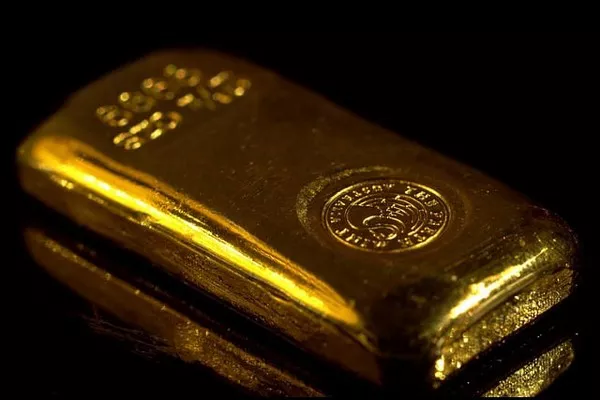The escalating tensions of a “Cold War 2.0” between China, Russia, Iran, and North Korea against the United States and its allies are poised to drive gold’s performance in the second half of 2024. Mike McGlone, Senior Commodity Strategist at Bloomberg Intelligence, asserts that this geopolitical climate, along with several other factors, strongly supports a bullish outlook for gold.
“While copper hit new highs in the first half of the year and crude oil did not, this indicates a longer-term tilt favoring metals over fossil fuels,” McGlone noted in his Midyear Metals Outlook. “However, gold seems to have the upper hand over most commodities in the latter half of the year. If the US stock market continues its strong performance—evidenced by the S&P 500’s 16% total return by June 24—base metals should remain resilient. Yet, the elevated risks of market correction could benefit gold.”
McGlone highlighted China’s property crisis and increasing resistance to its exports, reflected in the country’s 10-year yield dropping to 2.25%, the lowest since 2006. “The ‘unlimited friendship’ between Russia and China might be reshaping the global order with gold at its center,” he said, predicting continued advances for gold in the coming months.
Several correlations also appear favorable for gold, despite forecasting broader economic challenges. “Gold’s performance against the S&P 500 and the ratio of US Treasury total public debt to stock-market capitalization suggest potential upside for the metal,” McGlone wrote. “The gold-to-S&P 500 ratio on June 24 was 0.43, similar to levels seen in 2007, just before the Great Recession. Notably, the debt-to-market capitalization ratio has increased from 50% to 60% over the past 17 years. Gold’s 13% gain in 2024 could be signaling underlying economic issues, with copper’s 10% rise possibly driven by speculative futures.”
Bloomberg Intelligence anticipates a less uncertain second half of the year for gold prices, expecting a continuation of the upward trend. “Precious metals are leading our annual performance scorecard, while industrial metals lag, a trend likely to accelerate in the second half,” McGlone stated. “Despite the strong US dollar, gains in silver, gold, and copper may indicate divergent strength in metals, though base metals face greater reversion risks.”
Silver’s increasing industrial demand and its demonetization by gold were also highlighted. “Barring an unexpected détente in Cold War 2.0, we expect gold to be a top performer in the second half of the year,” McGlone added. “A downturn in the US stock market poses significant risks to copper and base metals, but would likely boost gold.”
McGlone pointed to the decline in industrial metals prices relative to gold, which could accelerate if Chinese government bond (CGB) yields continue their downward trend. “The CGB 10-year yield at 2.25% on June 18 suggests a new low in the Bloomberg Industrial Metals Spot Subindex (BCOMIN) vs. gold ratio,” he wrote. “This ratio has decreased from 100 at the end of 2009 to about 60, indicating a close link to CGBs.”
He concluded that there is little to prevent base metals from underperforming relative to precious metals, especially given deflationary signals from CGBs. “The Hang Seng index’s performance relative to the S&P 500, at its lowest since 1975, may indicate significant risks to the global economy. The massive monetary stimulus and Russia’s invasion of Ukraine spiked the BCOMIN/gold ratio to a peak in 2022, with the aftermath likely to be prolonged.”
McGlone also supports the view that gold prices will benefit when the Federal Reserve begins lowering interest rates. “Expectations for risk-asset support due to eventual Fed rate cuts may not materialize as anticipated, which could buoy gold,” he noted. “The metal’s current value relative to the S&P 500, at 2.3 ounces, compares to the 1999 peak of 5.6 and the 50-year average of 1.6. This suggests potential for gold to outperform as the SPX/gold ratio reverts to historical norms.”
Additionally, Bloomberg Intelligence forecasts that gold will gain against silver, particularly after the gold/silver ratio likely set a bottom recently. “The historically low unemployment rate of 3.4% in 2023, which has typically risen above 6% following similar lows since 1947, may bolster gold relative to silver,” McGlone explained. “The gold/silver ratio’s rebound to 73 ounces in May, the lowest since 2021, likely established a support level. At about 77 ounces on June 20, 73 looks like key support heading towards the first-quarter high just above 90.”
“In the second half of the year, one of the key questions will be whether the gold/silver ratio will continue to rise with unemployment—a scenario we believe is likely,” McGlone observed. “Given the rare occurrence of the jobless rate reversing direction and the year-over-year fall in the consumer price index amid rising unemployment for the first time since 1982, the outlook for the gold/silver ratio remains strong.”


